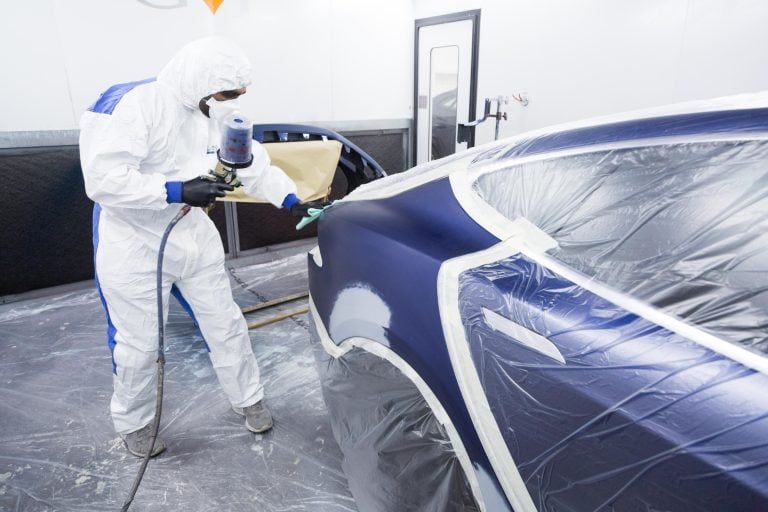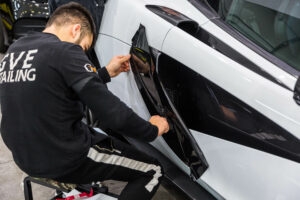- Detailing Case Studies
Lifespan of Paint Protection Films: What to Expect
Discover the expected lifespan of paint protection films and learn what factors can affect their durability to maximize longevity of SUVs.
Paint Protection Films (PPF) serve as a crucial barrier between a vehicle’s paintwork and various environmental hazards, such as stone chips, scratches, bird droppings, and UV rays. They are designed to maintain the aesthetic appeal of a vehicle by preventing damage and preserving its pristine finish over time.
The lifespan of PPF varies depending on several factors, including the quality of the film, environmental conditions, driving habits, and maintenance practices. While PPF is known for its durability, understanding the factors that affect its longevity is essential for managing expectations and maximizing its effectiveness.
This article aims to offer valuable insights into the lifespan of PPF and the factors that influence its durability. By understanding the role of PPF in preserving vehicle appearance and the various types available, readers can make informed decisions about protecting their vehicles and maintaining their aesthetic appeal.
Understanding Paint Protection Films
Paint Protection Films (PPF) are transparent, thermoplastic urethane films that are applied to the painted surfaces of vehicles to protect them from scratches, chips, and other damage. These films are typically self-healing, meaning they have the ability to repair minor scratches and swirl marks when exposed to heat, such as sunlight or warm water. PPF acts as a sacrificial barrier between the vehicle’s paint and external elements, preserving the original finish and enhancing the vehicle’s appearance.
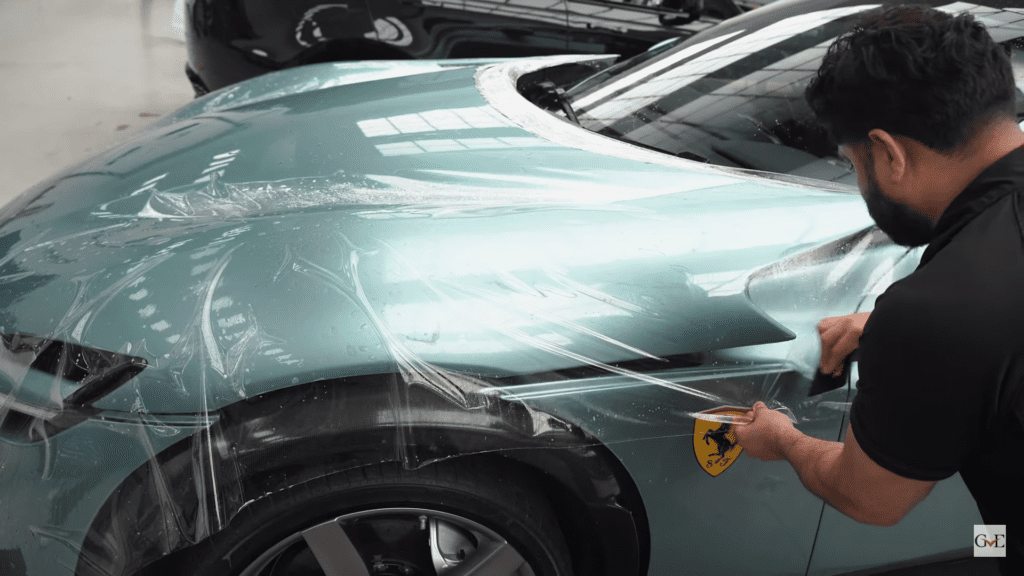
Different Types of PPF and Their Durability Characteristics
There are several types of PPF available on the market, each offering varying levels of durability and protection. Standard PPF is designed to provide basic protection against rock chips, road debris, and minor abrasions. Premium or high-grade PPF, such as XPEL Ultimate Plus or 3M Scotchgard Pro, offers enhanced durability, self-healing properties, and resistance to yellowing and staining over time. Ceramic-coated PPF combines the benefits of PPF with the added protection of a ceramic coating, providing superior gloss, hydrophobicity, and scratch resistance.
Benefits of Using PPF Compared to Traditional Wax or Sealants:
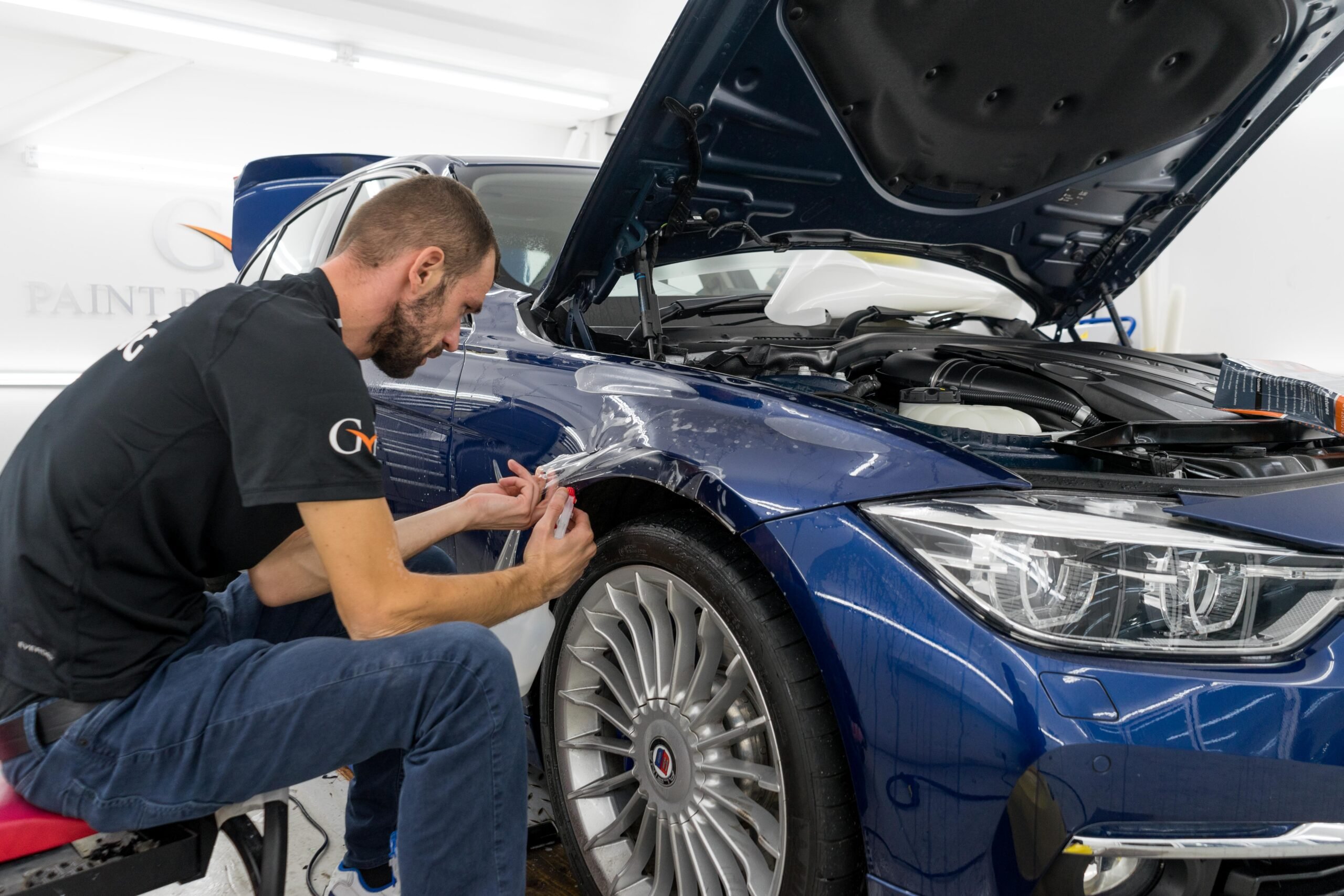
- Enhanced Protection: PPF offers superior protection against scratches, chips, and environmental damage compared to traditional wax or sealants.
- Longevity: PPF typically lasts longer than wax or sealants, providing durable protection for several years.
- Self-Healing Properties: Many PPF products have self-healing capabilities, allowing them to repair minor scratches and swirl marks automatically.
- Invisible Protection: PPF is virtually invisible once applied, preserving the original appearance of the vehicle’s paint.
- Resale Value Preservation: By protecting the paint from damage, PPF helps maintain the resale value of the vehicle over time.
- Easy Maintenance: PPF is easy to clean and maintain, requiring only regular washing with soap and water to keep it looking its best.
Factors Affecting PPF Lifespan
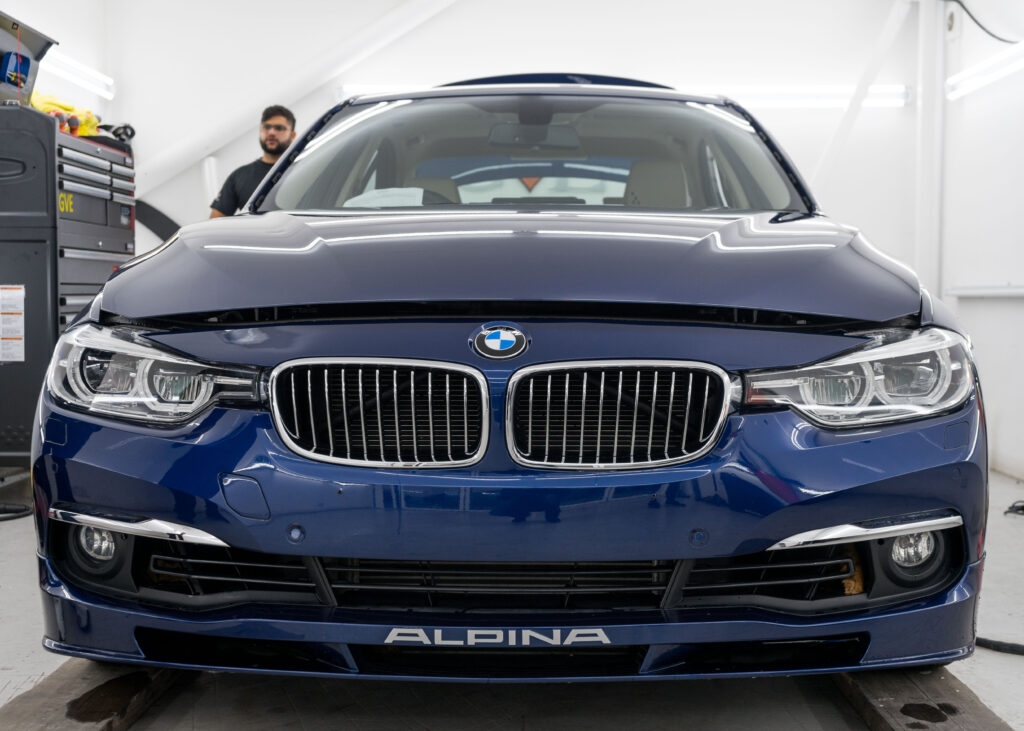
Quality of PPF Material: The quality of the paint protection film used plays a significant role in determining its lifespan. Higher-grade PPF materials, such as premium or ceramic-coated films, are engineered to be more durable and long-lasting compared to standard PPF options. Investing in a high-quality PPF product can result in extended protection and longevity for your vehicle’s paint.
Thickness of the Film: The thickness of the paint protection film also affects its durability and lifespan. Thicker films provide enhanced protection against rock chips, scratches, and other forms of damage. However, thicker films may also be more prone to visible edges or lines, particularly on complex or curved surfaces. Strike a balance between thickness and visibility to ensure optimal protection without compromising aesthetics.
Installation Quality: The skill and expertise of the installer can significantly impact the lifespan of the paint protection film. Proper installation techniques, such as thorough surface preparation, precise cutting, and careful application, are essential for ensuring that the film adheres securely to the vehicle’s paint and performs as intended. Improper installation, such as air bubbles, wrinkles, or uneven edges, can compromise the effectiveness of the film and lead to premature degradation.
Environmental Factors: Environmental conditions, such as exposure to sunlight, extreme temperatures, and harsh weather elements, can affect the lifespan of the paint protection film. PPF materials with UV inhibitors are more resistant to fading and yellowing when exposed to sunlight. Additionally, frequent exposure to road debris, salt, and chemicals can accelerate wear and tear on the film. Parking your vehicle in a covered garage or using a car cover can help protect the PPF from environmental damage and prolong its lifespan.
Maintenance Practices: Regular maintenance and care are essential for maximizing the lifespan of the paint protection film. Routine washing with a pH-neutral car shampoo and gentle microfiber wash mitt helps remove dirt, grime, and contaminants that can degrade the film over time. Avoid using abrasive cleaners, harsh chemicals, or automatic car washes with brushes, as these can damage the film’s surface and reduce its effectiveness. Periodic application of a PPF-safe sealant or ceramic coating can provide additional protection and extend the lifespan of the film.
By considering these factors and taking proactive measures to protect and maintain your paint protection film, you can ensure that it continues to provide reliable protection for your vehicle’s paintwork for years to come.
Expected Lifespan of PPF
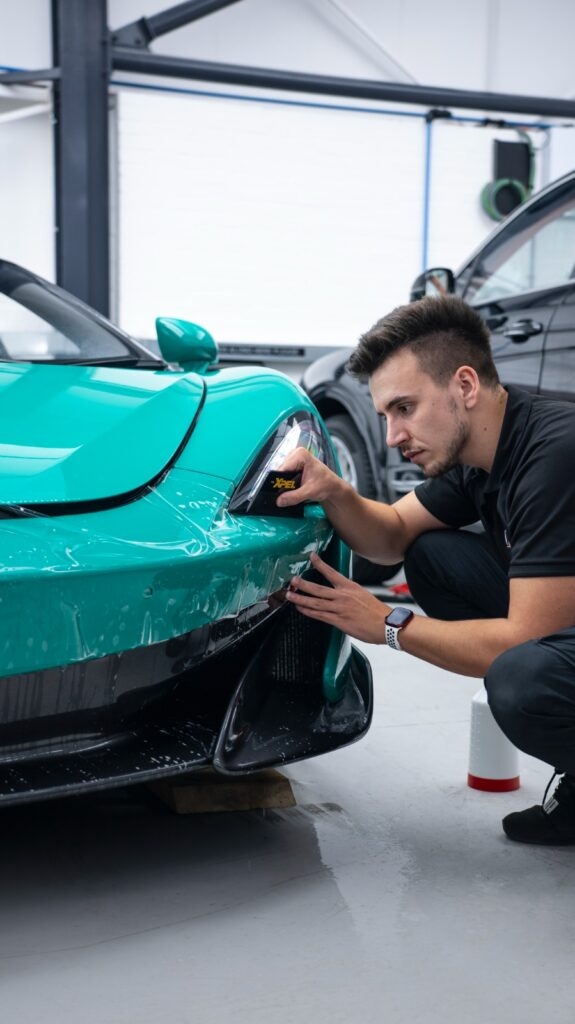
PPF manufacturers typically provide guidelines regarding the expected lifespan of their products. These guidelines may vary depending on the quality and type of PPF used, as well as factors such as climate, driving conditions, and maintenance practices. In general, high-quality PPF products like XPEL Ultimate Plus or 3M Scotchgard Pro are designed to last anywhere from five to ten years or more with proper care and maintenance.
While PPF manufacturers may claim a certain lifespan for their products, real-world durability can vary based on several factors. Harsh environmental conditions, such as exposure to extreme temperatures, UV radiation, salt, and pollutants, can accelerate PPF degradation over time. Additionally, factors like frequent off-road driving, abrasive road debris, and improper maintenance can impact the longevity of PPF. Therefore, it’s essential for supercar owners to consider these variables and adjust their expectations accordingly.
Signs of PPF Wear and When to Consider Replacement or Maintenance
Over time, PPF may show signs of wear and degradation, indicating the need for replacement or maintenance. Common signs of PPF wear include:
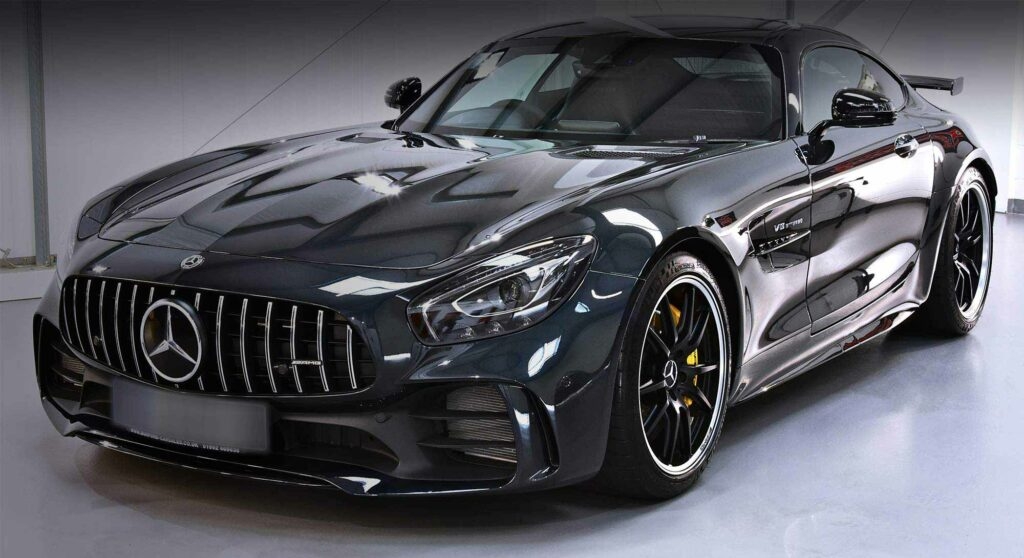
- Yellowing or Discoloration: PPF may develop a yellowish tint or discoloration due to exposure to UV radiation and environmental contaminants.
- Peeling or Lifting: PPF edges may start to lift or peel away from the vehicle’s surface, compromising its protective properties.
- Scratches and Damage: Despite its protective capabilities, PPF can still become scratched or damaged over time, especially if subjected to abrasive materials or impact from road debris.
- Loss of Gloss: PPF may lose its gloss and clarity over time, detracting from the appearance of the vehicle’s paint. When these signs become apparent, it’s essential to assess the condition of the PPF and determine whether maintenance, such as spot repairs or reapplication of topcoat, is sufficient, or if complete replacement is necessary to ensure continued protection. Regular inspections and proactive maintenance can help prolong the lifespan of PPF and preserve the appearance of the vehicle’s paint for years to come.
Conclusion
In conclusion, the lifespan of paint protection films (PPF) is influenced by various factors such as the quality of the material, installation techniques, environmental conditions, and maintenance practices. Investing in high-quality PPF and ensuring proper installation by experienced professionals can significantly extend its lifespan and effectiveness in protecting your vehicle’s paintwork.
Regular maintenance, including gentle washing and periodic application of protective coatings, is essential for preserving the integrity of the PPF and maximizing its longevity. By adopting proactive maintenance habits and monitoring the condition of the film, car owners can enjoy long-term protection against scratches, rock chips, and other forms of damage.
At GVE London, we understand the importance of preserving your vehicle’s appearance and value. That’s why we offer professional detailing and paint protection film services to keep your car looking its best for years to come. Our team of skilled technicians is dedicated to providing top-quality installation and maintenance to ensure the longevity and effectiveness of your PPF. Trust GVE London for all your detailing and PPF needs, and enjoy peace of mind knowing that your vehicle is in expert hands.
Watch us showcase the meticulous installation of full paint protection film on a 2023 Chevrolet Corvette at our cutting-edge facility, GVE London.
Frequently Asked Questions
Factors such as the quality of the PPF material, environmental conditions, driving habits, and maintenance practices can all affect the lifespan of PPF. High-quality PPF with superior UV resistance and self-healing properties tends to last longer than lower-grade films. Additionally, exposure to harsh weather conditions, frequent off-road driving, and improper maintenance can accelerate wear and reduce the lifespan of PPF.
Regular maintenance is key to maximizing the lifespan of PPF. It’s recommended to wash the vehicle gently with a pH-neutral car shampoo and soft microfiber cloth regularly to remove dirt, debris, and contaminants that can degrade the film over time. Additionally, applying a protective sealant or ceramic coating to the PPF can help enhance its durability and longevity. Depending on driving conditions and exposure to elements, periodic inspections and touch-ups may also be necessary to address any damage or wear.
Yes, paint protection films can typically be repaired or replaced if they become damaged or worn. Minor scratches or blemishes can often be buffed out or repaired using specialized tools and techniques. In cases of more severe damage, such as deep scratches or punctures, the affected section of the film may need to be replaced. Professional technicians with experience in PPF installation and repair can assess the damage and recommend the appropriate course of action to restore the film’s protection.
Then we apply the Film using a specially formulated gel solution – we use a range of squeegees to ensure that there are no creases or bubbles after application and that no corners or edges of PPF are visible.

Bismah
Author
Contact Us
"*" indicates required fields
OUR SERVICES

PAINT PROTECTION FILM
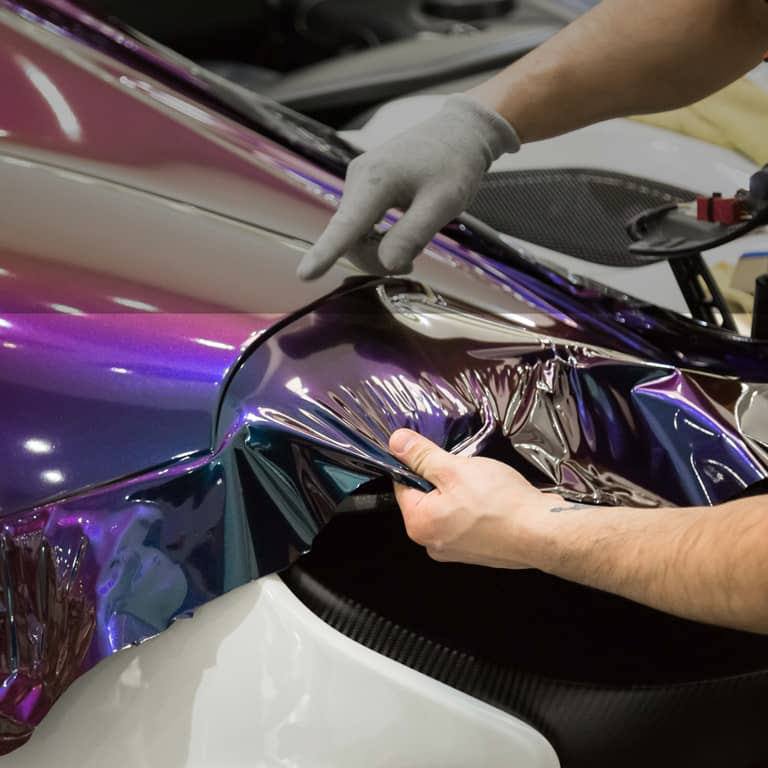
WRAPPING
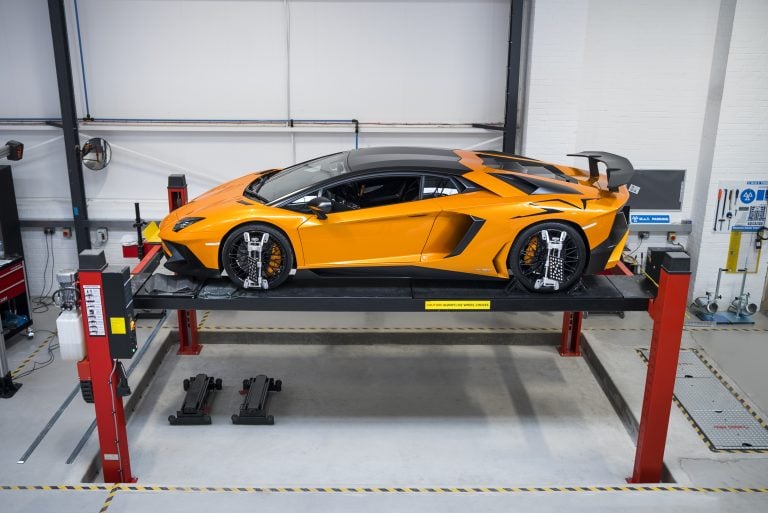
SERVICING
